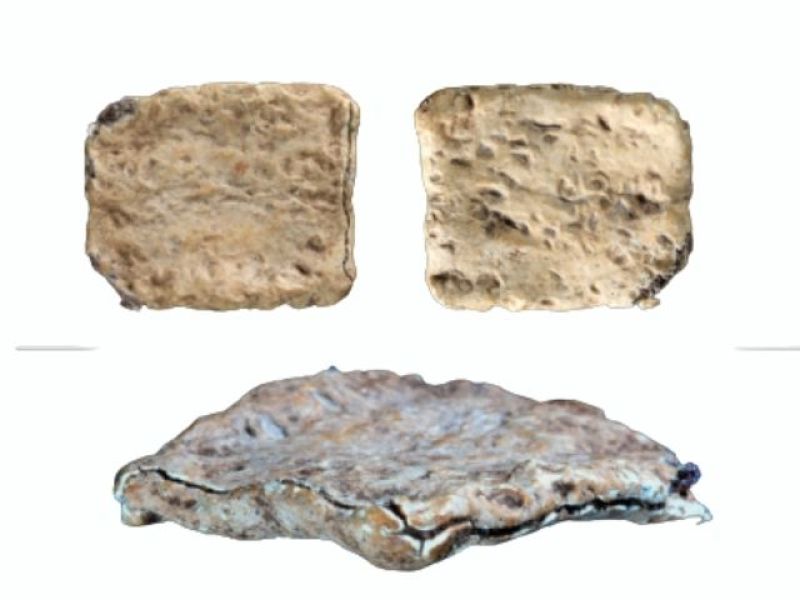
An ancient lead tablet with a written inscription in Hebrew was discovered on Israel's Mount Ebal and speaks of curses similar to that in the Old Testament.
ChurchLeaders reported that the inscription caught the attention of a Southern Baptist seminary professor who urged caution on the writings' meaning. The tablet is said to be a few centimeters in measurement and dates to the Bronze Age, particularly between 1200 B.C. and 1400 B.C. It is said to be older than the Dead Sea Scrolls, which are estimated to be from 200 B.C.
"Cursed, cursed, cursed--cursed by the God YHW. You will die cursed. Cursed you will surely die. Cursed by YHW--cursed, cursed, cursed," the inscription on the tablet read.
Accordingly, Mount Ebal is mentioned in Deuteronomy 27 and Joshua 8. The artifact was specifically discovered in the location said to be where Joshua created an altar, as mentioned in the Bible. The location was pinpointed by archaeologist Adam Zertal in Mount Ebal based on a 1980s excavation of some materials in the area.
The Bible Seminary Archeological Studies Institute Director Scott Stripling of Katy, Texas then led a team to Mount Ebal to study Zertal's excavations in 2019. Stripling then discovered the tablet and was able to translate its inscription. Stripling announced the matter last March 24. The archeologist highlighted that the artifact could be the oldest known evidence containing the name of God in Hebrew as "Yahweh."
However, New Orleans Baptist Theological Seminary Professor of Biblical Interpretation Jim Parker disagrees with the dating of the artifact. Parker argues that the dating of the artifact to the Bronze Age is inaccurate since there is not enough evidence for it.
"We love any kind of find, particularly inscriptions, that can add to our knowledge base, and this find is very interesting. If it turns out to be what it is thought to be, it would be a monumental find in archaeology for Israel, but I believe there is just more work to be done," Parker said.
"The issue for this artifact is the context or provenance where it was found. It can be very difficult to do this sort of relative dating on an artifact like this because it was found in an area which had already been dug, so it can be hard to determine when the artifact was deposit or dropped in that location..there simply isn't enough evidence in hand yet to accurately date an artifact like this," he added.
Parker did praise the artifact's discovery and acknowledged that the inscription's content provided evidence of what Scripture contains. It also supported the earlier Hebrew language that is used in the Bible.
According to the professor, the kind of language the tablet contains reflects that which is used in the books of Deuteronomy and Joshua. Parker highlighted that this links to the biblical passages because that was how the Hebrews spoke at that time based on literary techniques of the period. He emphasized that the cursing language used in the tablet found from Mount Ebal is exactly what you'll find used in Deuteronomy 27 and Joshua.
"It is a direct link to these biblical passages, and the language would almost be contemporary to that time," Parker said.
The professor cited the Chiastic language which is a style of writing that repeats certain words in a particular order, such that it comes toward and from the center of the line of a certain text. Examples of this are found, he said, in Isaiah 2:3-5, Isaiah 6:7, and Isaiah 11:4.
The professor raised that he looks forward to more technological advancements in archeology, which are very important in supporting the truthfulness of the Scriptures. He said the tablet discovered may be small but technology allows archeologists to see into things unlike before. This, he pointed out, helps in a better understanding of such discoveries.

















